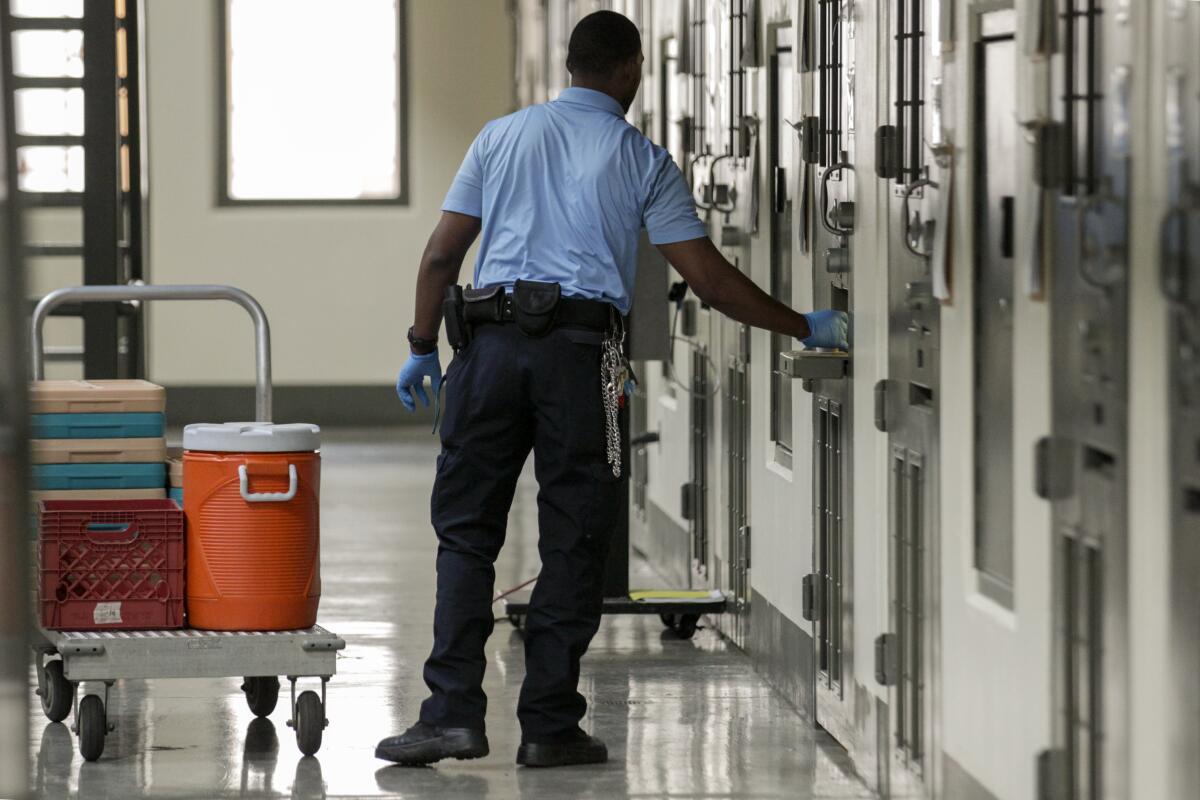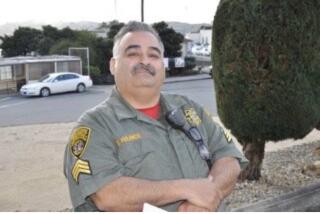ICE released a sick detainee from Adelanto immigration facility. He died three days later

- Share via
Martin Vargas had been dealing with a coronavirus infection and other health problems when immigration officials told his attorney they were considering releasing him from the Adelanto Immigration and Customs Enforcement processing center.
Weeks went by before Margaret Hellerstein found out that her client had indeed been released, but no one notified her or told her where he went. Worried he was living on the street, she filed a missing persons report. Soon after, she found out that Vargas had suffered a stroke March 3 and died at a hospital three days after his March 5 release.
“I had been saying since last April he’s going to die in there. His death is absolutely on their hands,” Hellerstein, of the Esperanza Immigrant Rights Project, told The Times in an interview. “They covered it up and released him so they would not have to answer for it. I should not have had to call the coroner to find out my client died a week before.”
The case raises questions about whether immigration officials are undercounting detainee deaths during the pandemic by releasing people just before they die, said Jessica Karp Bansal, an attorney with the American Civil Liberties Union of Southern California, which sued to secure the release of detainees to allow for social distancing in the facility.
“It’s very concerning, this timeline where ICE releases him three days before he dies,” Bansal said in an interview.
An ICE spokesperson said the agency “does not comment on pending litigation” and declined to answer questions about Vargas’ detention and release, as well as whether his case was counted as an in-custody death.
According to documents the ACLU filed in federal court on Friday, Vargas had lived in the U.S. for more than 50 years and had been detained at the Adelanto center since April 2019. He was convicted in 1985 of committing lewd or lascivious acts with a minor under 14 when he was also a minor, his attorney wrote last year in a request for humanitarian parole.
A federal judge ordered his release early in the pandemic, but his housing fell through, Hellerstein said. She said he had serious health conditions, including schizophrenia, diabetes and cellulitis, for which he was hospitalized multiple times last year. By the time Vargas secured a new housing arrangement, she said, other litigation had prevented his release.
Vargas contracted COVID-19 in December and was in and out of the hospital for months. Late in February, when ICE said it was considering releasing him, Hellerstein began making arrangements for a driver to pick him up and take him to a halfway house, according to a declaration she wrote that was attached to the ACLU filing.
Meanwhile, she said, he was actually in a hospital, and with his health deteriorating, ICE released custody of him without telling her. He died three days later.
“I now believe that ICE knew in February that Mr. Vargas was close to death, and that they deliberately misled me so they could get information about his next of kin,” Hellerstein said in the declaration. “There is no doubt in my mind that they intended for me to believe Martin was being released to the community.”
Immigrant rights advocates said this isn’t the first time someone has died soon after their release from immigration detention. They pointed to the case of Jose Ibarra, who also died soon after being released in 2019 from the Adelanto facility. The facility has long faced criticism for issues related to medical care and treatment of detainees.
The Department of Homeland Security inspector general’s office in 2018 issued a scathing report in which officials said they had found several problems at the facility that posed “significant health and safety risks,” including detainees who reported waiting “weeks and months” to see a doctor.
More to Read
Sign up for Essential California
The most important California stories and recommendations in your inbox every morning.
You may occasionally receive promotional content from the Los Angeles Times.












